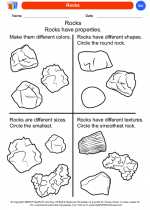Dendrites: The Receivers of the Nervous System
Dendrites are the branch-like structures that extend from the cell body of a neuron. They are the primary receivers of signals from other neurons. Dendrites play a crucial role in the transmission of electrical and chemical signals within the nervous system.
Structure of Dendrites
Dendrites are covered in tiny protrusions called dendritic spines, which increase the surface area available for receiving signals. The structure of dendrites allows them to form connections with thousands of other neurons, making them essential for transmitting and processing information in the brain.
Function of Dendrites
When a neuron receives signals from other neurons, these signals are transmitted to the dendrites. The dendrites then integrate these signals and, if the combined input reaches a certain threshold, they generate an electrical signal called an action potential. This action potential then travels down the neuron's axon to pass the signal to other neurons.
Study Guide
- Describe the structure of dendrites and their role in receiving signals.
- Explain how dendritic spines contribute to the function of dendrites.
- Discuss the process by which dendrites integrate signals and generate an action potential.
- Compare and contrast the functions of dendrites and axons in the nervous system.
- Explore the significance of dendrites in information processing and transmission within the brain.
Understanding the structure and function of dendrites is essential for comprehending how neurons communicate and process information in the nervous system. Be sure to review the study guide questions and seek further resources to reinforce your understanding of this important topic.
.◂Science Worksheets and Study Guides Kindergarten. Our Earth

 Coloring Worksheet
Coloring Worksheet
 Coloring Worksheet
Coloring Worksheet
 Coloring Worksheet
Coloring Worksheet
 Coloring Worksheet
Coloring Worksheet
 Coloring Worksheet
Coloring Worksheet
 Coloring Worksheet
Coloring Worksheet
 Coloring Worksheet
Coloring Worksheet
 Coloring Worksheet
Coloring Worksheet
 Coloring Worksheet
Coloring Worksheet
 Coloring Worksheet
Coloring Worksheet
 Coloring Worksheet
Coloring Worksheet
 Coloring Worksheet
Coloring Worksheet
 Coloring Worksheet
Coloring Worksheet
 Coloring Worksheet
Coloring Worksheet
 Coloring Worksheet
Coloring Worksheet
 Coloring Worksheet
Coloring Worksheet
 Coloring Worksheet
Coloring Worksheet
 Coloring Worksheet
Coloring Worksheet
 Coloring Worksheet
Coloring Worksheet
